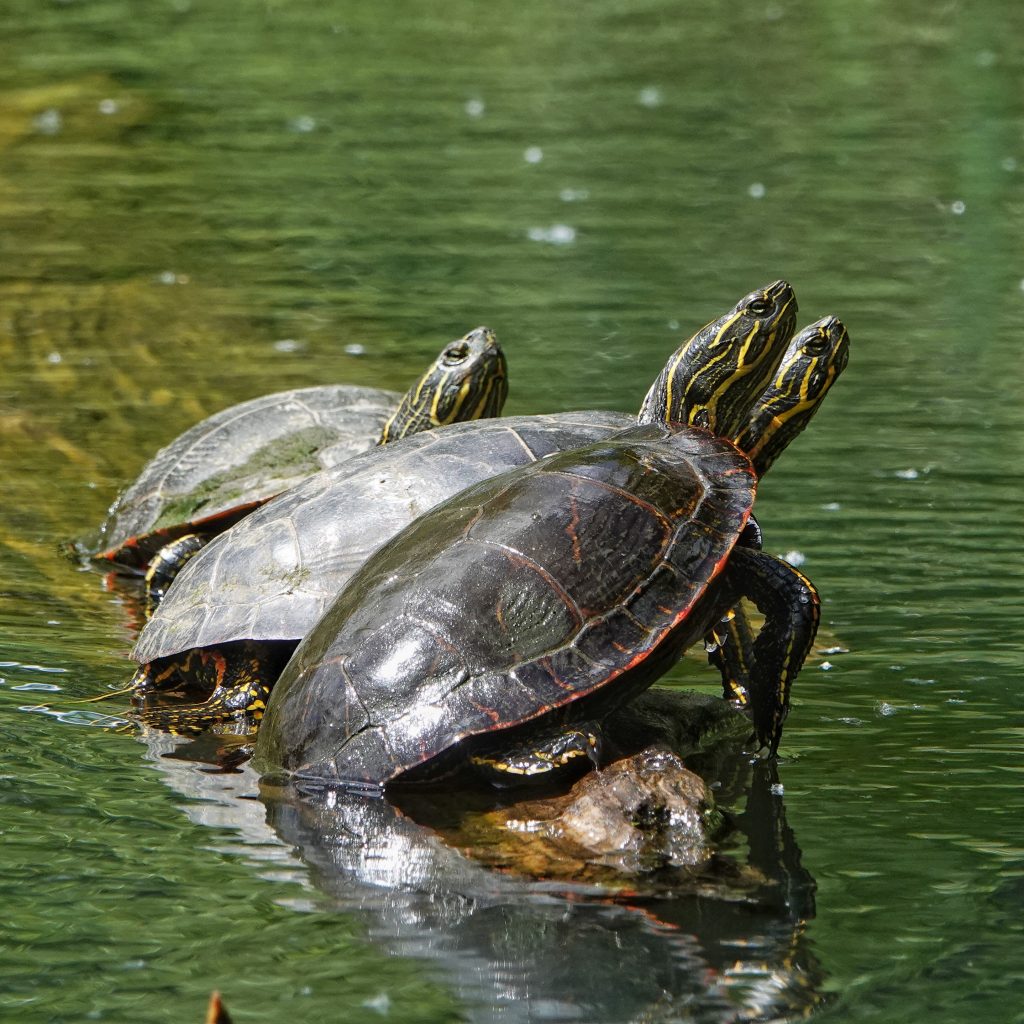
I love to see turtles! There is something so endearing and enduring about them, a zen like equanimity that calls up respect and admiration in me. So it was particularly disappointing to me when I discovered (actually when I was gobsmacked by) the fact that many of the turtles I had been calling Western Painted Turtles were probably Red-eared Sliders (see ‘Similar Species’ below for ways to distinguish the two). It turns out that in the 40 years since I was told that our only turtles with yellow marked heads were Painted Turtles, cast offs from the pet trade have proliferated in our waters, and in some places there are as many or more non-native Red-eared Sliders (Trachemys scripta elegans) as there are native Western Painted Turtles. And while researching this profile I found out that at least some of the Painted Turtles that I may have seen in the Puget Trough were probably also refugees from the pet trade, and not from native stock, since historically the natives were found only in the Columbia Basin and the Lower Columbia and near environs. But still, I love turtles, and I can’t find it in my heart to dislike any of them, regardless of their origins.
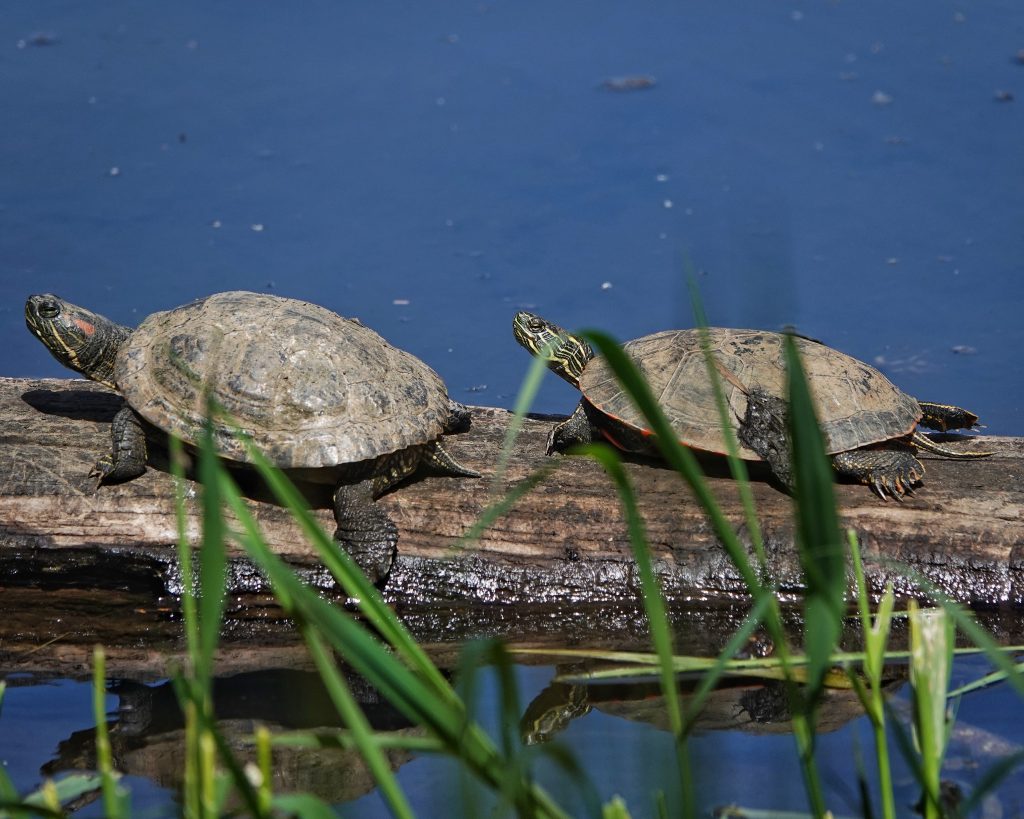
I’ve seen the heads of what I assumed were Chrysemys picta bellii sticking out of the water before, but during a recent trip to the aptly named Turtle Pond along the Salmon Creek Greenway in Clark County, Washington (which is where all of the photos were taken in both this profile and the one on Trachemys scripta elegans) for the first time I was actually able to see them swimming from above. Usually I find them basking in the sun on a log or some other floating platform, or on the bank. Basking is very important to the well being of these turtles. Not only does it regulate their body temperature, the UV rays help get rid of skin parasites, and is necessary for the production of vitamin D. And they fight for those spots! In fact one of the most deleterious effects of the Red-eared Sliders is that, being larger on average for same age turtles, they outcompete the Painted Turtles for the prime basking spots.
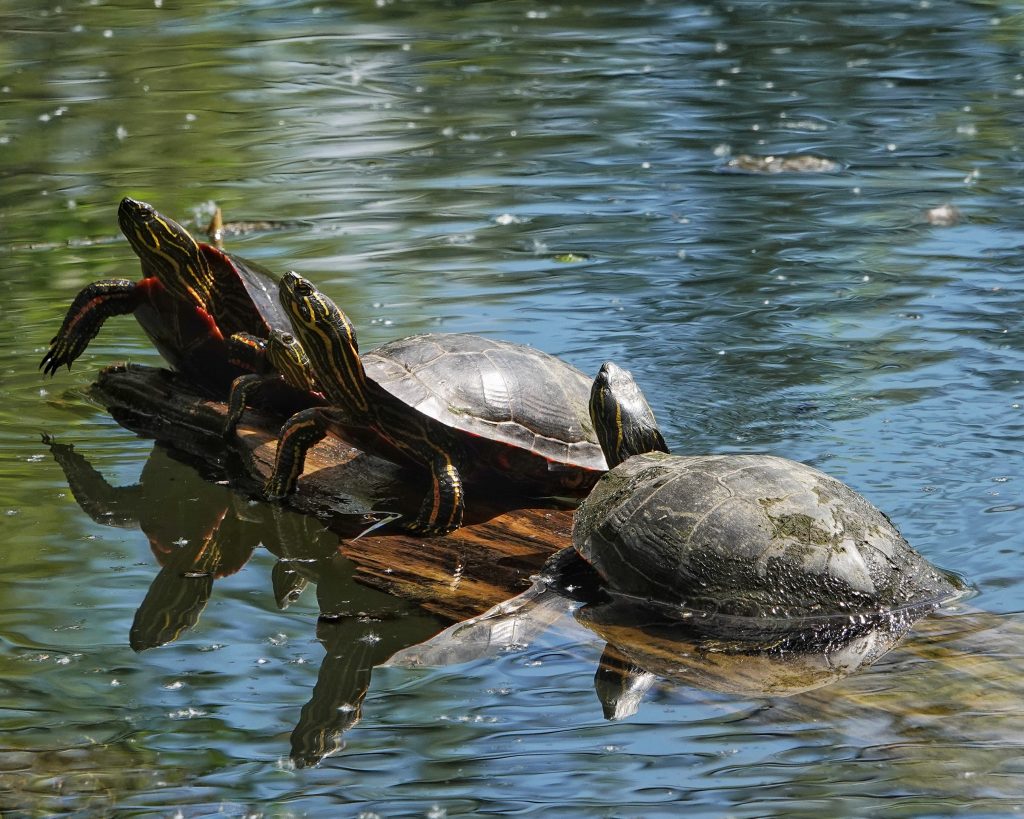
Mating of Western Painted Turtles take place in early to mid spring, and is actually quite tender for reptiles. The male swims slowly past the female, then approaches her from the front. He then uses his front claws to caress her head with a quavering motion. If she is interested she in turn caresses his front legs, then sinks to the bottom after he withdraws, where mating takes place. Viable sperm may be stored for many weeks, until nesting conditions are right. Much like the Red-eared Sliders, the sex of the next generation is not genetically foreordained, but is instead determined by the incubation temperature at a critical point in embryogenesis. If it is 85⁰ or above all females are created, and temperatures from 75⁰-80⁰ result in all males. Unlike my research into Red-eared Sliders, I was able to corroborate that temps between 80⁰ and 85⁰ result in a mixture of sexes. This appears to be a primitive form of sex determination, but in years with a cold and prolonged spring it ensures that at least some females will be produced.
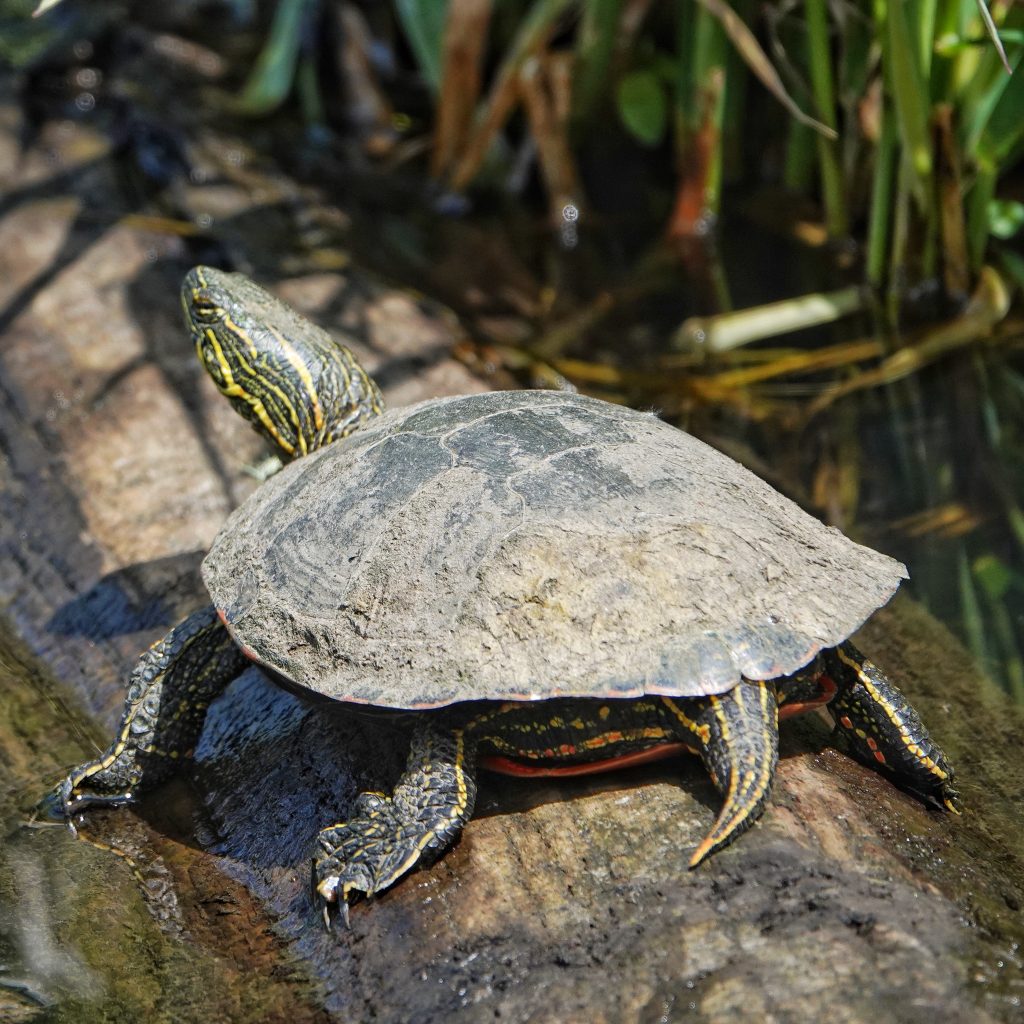
Chrysemys picta bellii is well adapted to cold winters, and enters brumation (the reptile equivalent of hibernation) when water temperatures fall below about 50⁰, sinking into the mud and doing without external oxygen sources for weeks at a time. Even more remarkable is that the hatchlings, who usually overwinter in the nest and emerge in the spring, can survive temperatures down to 15⁰ without freezing! They accomplish this by withdrawing into their shells, and, unlike most other species of turtles, having a keratin layer that is backed by oils that act as insulation and resist freezing. They also lack ‘formation motes’ in their tissues, which are points around which ice crystals can form. Now that is an amazing evolutionary adaptation.
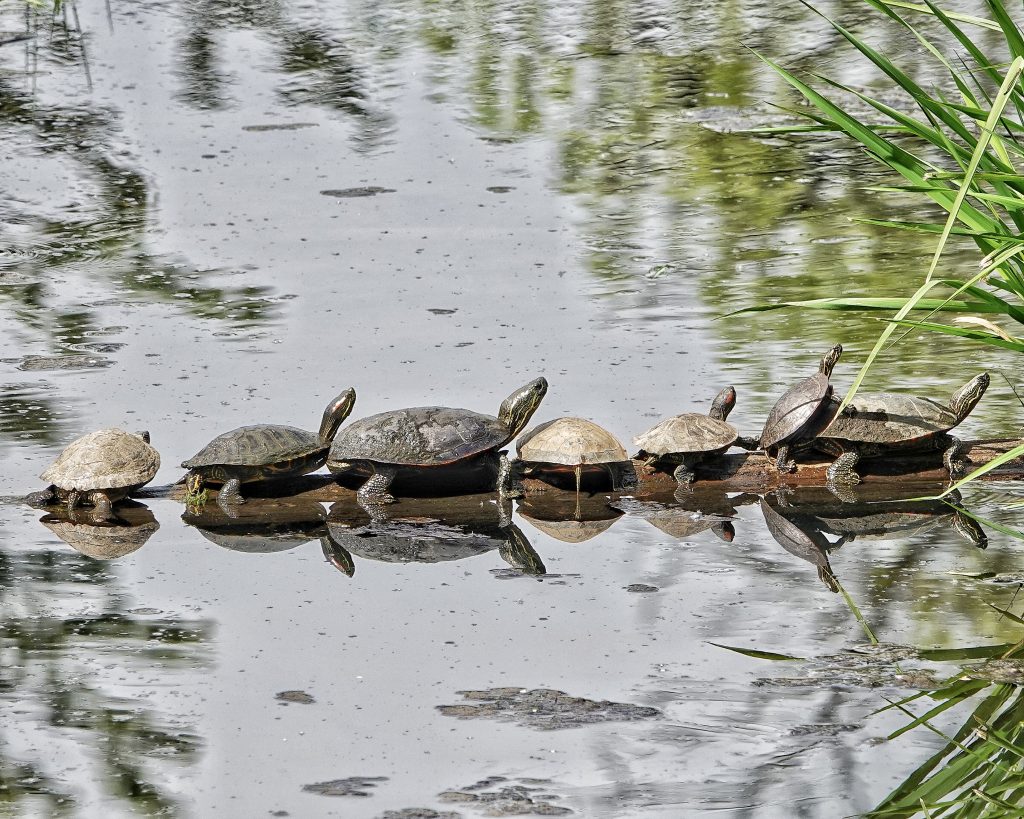
This profile, and the accompanying one on the Red-eared Slider, will be the last posts I automatically share links to with all of the appropriate Facebook groups to which I belong. I will still periodically share links there, to enable newcomers to find my site. I hope all of you choose to either follow me on Facebook (all posts will be shared to my wall/timeline/homepage) or subscribe to the free emails generated by this website. For those of you who do not do so, well, it’s been nice sharing my passion for the wild living organisms of the PNW with you, and I wish you many happy hours exploring the amazing diversity of our region.
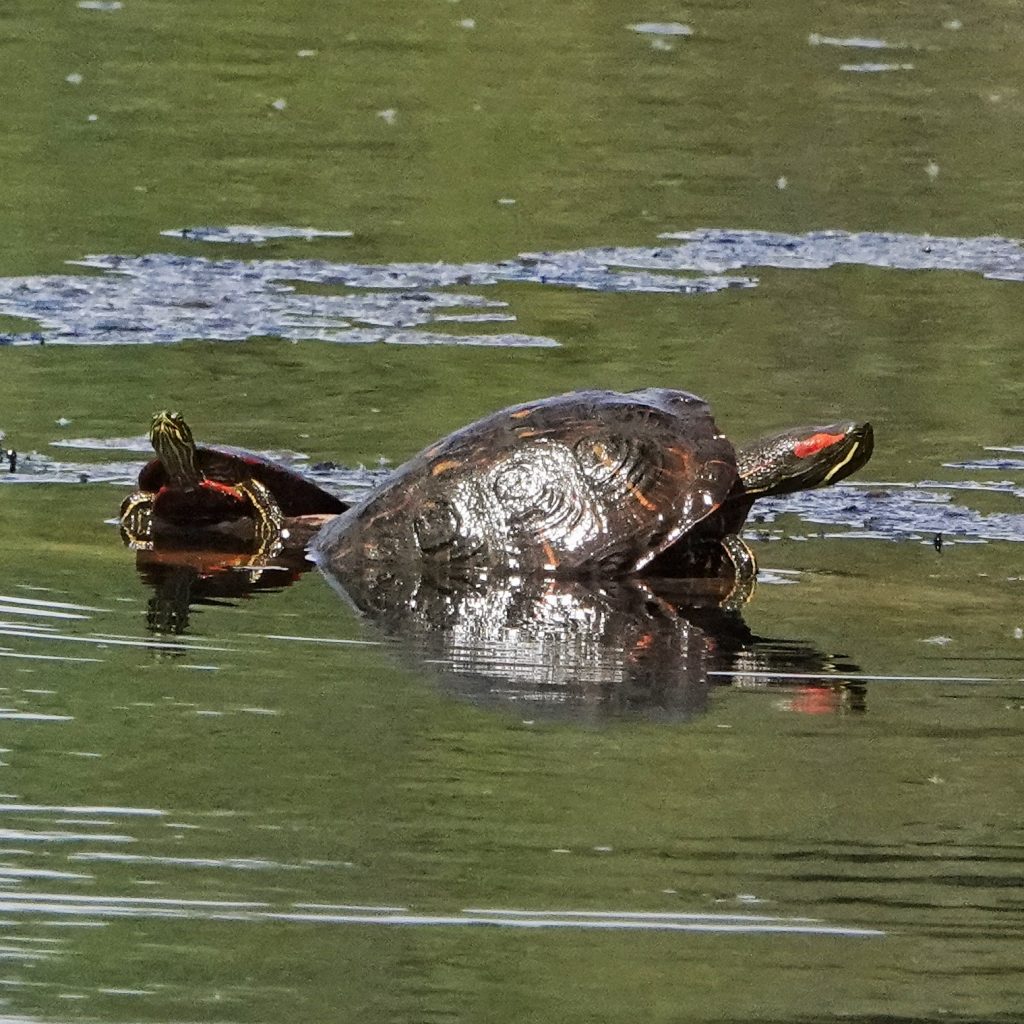
Description-Medium sized (seldom over 10” long) turtles with a shallow, unkeeled (except in the very young), green to dark brown carapace, with yellow markings (but no red) on the head, throat, legs, and tail; carapace is lightly marked with yellow and sometime red, more pronounced in the young ones; small plates at the back of the carapace (rear marginal scutes) are smooth; males are smaller, with longer front claws than the females; carapace often obscured by mud.
Similar species–Red-eared Sliders have elongated red mark behind the eye, taller and mildly keeled carapace, rear marginal scutes jagged; other turtles in our region lack yellow on the head and throat.
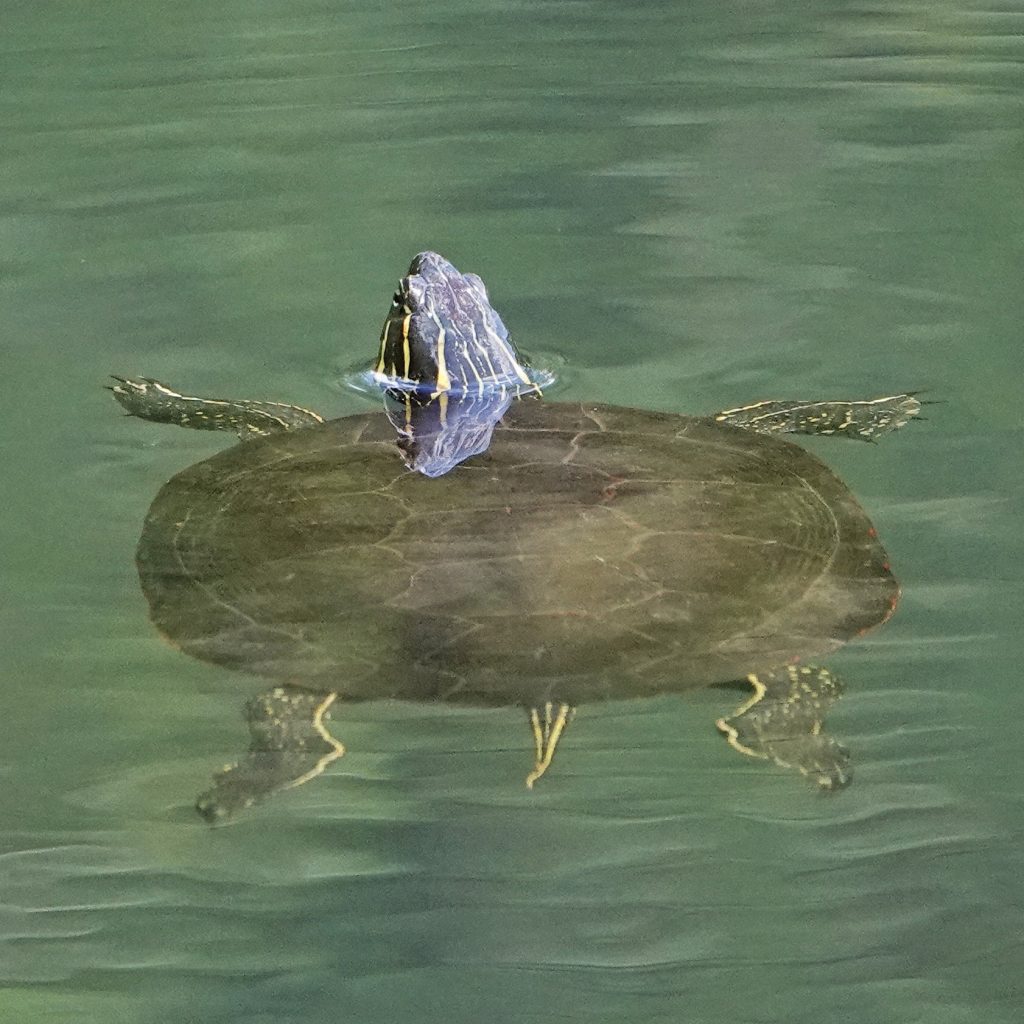
Habitat-Slow and still waters with mud or sand bottoms and abundant aquatic vegetation.
Range-Temperate North America; our subspecies C.p. bellii is found in the northern tier west of the Mississippi; found in the Puget Trough, Willamette Valley, near the Lower Columbia River, and throughout the Columbia Basin east of the Cascades; native to parts of our region, but may have been introduced into the Puget Trough.
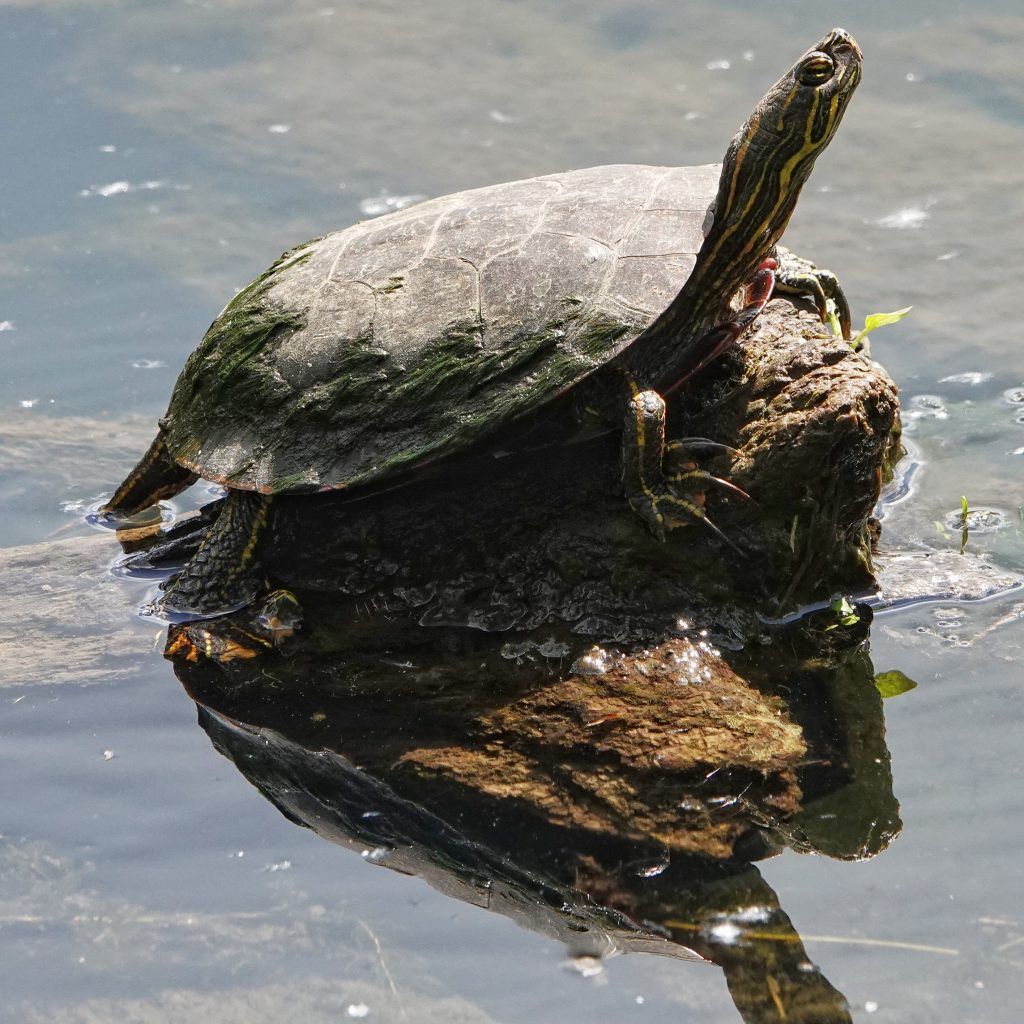
Eats-Omnivorous; aquatic and terrestrial plants, snails, insects, tadpoles and small frogs, fish, worms, snails, and other invertebrates; the young are primarily carnivorous, but eat progressively more vegetation as they age.
Eaten by-Until they are over 4-5” long they are prey for raccoons, otters, mink, foxes, skunks, large fish, herons, egrets etc.; fairly invulnerable once they reach a certain size if they can retract into their shell, but as hatchlings moving toward the water they are probably preyed upon by almost all vertebrate predators.
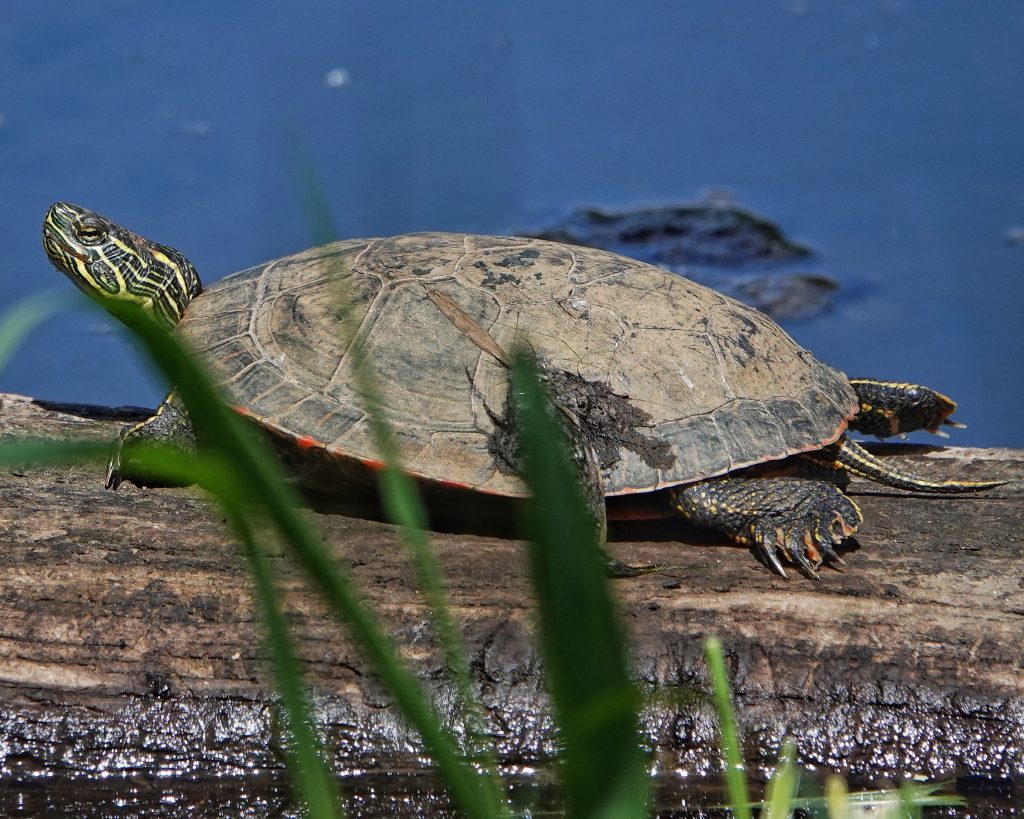
Adults active-Diurnal, and sleeps underwater at night; March to November; usually go dormant (brumate) during the coldest months of the year, although they may be seen on relatively warm days.
Life cycle-Males reach sexual maturity in 3-4 years, females in 5-6; digs nests in sandy or grassy soil in sunny locations fairly near to the water; 2-20 eggs per clutch, 1-2 clutches per year; breeding takes place underwater from March to May, and eggs are laid from June to August; eggs hatch in 70-90 days; fall hatching young often overwinter in the nest; lifespan 20-40 years
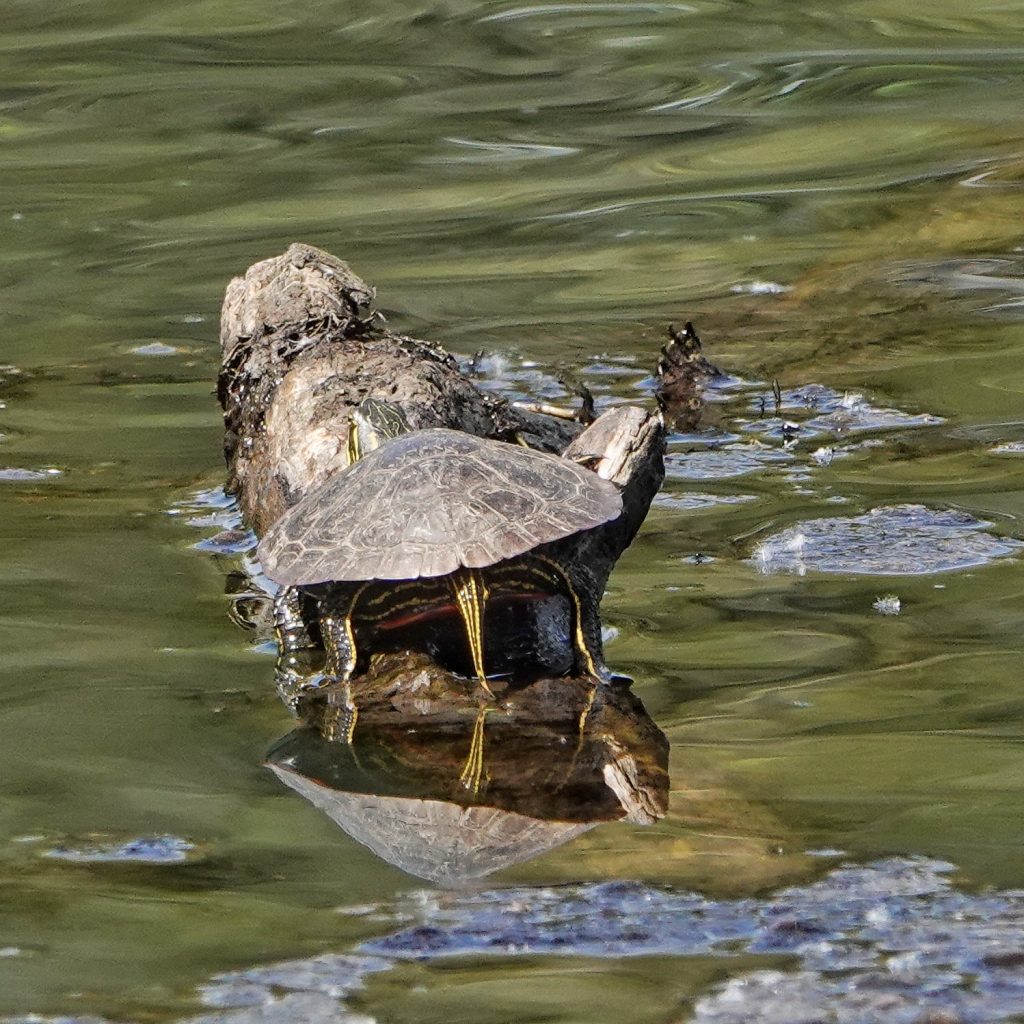
Etymology of names–Chrysemys is from the Latin words for ‘golden turtle’, and refers to the color of the markings on the carapace of the type specimen for the genus. The specific epithet picta is from the Latin word for ‘painted’, apparently also referring to the carapace, although I had always assumed it referenced the colorful patterns on the head and throat.
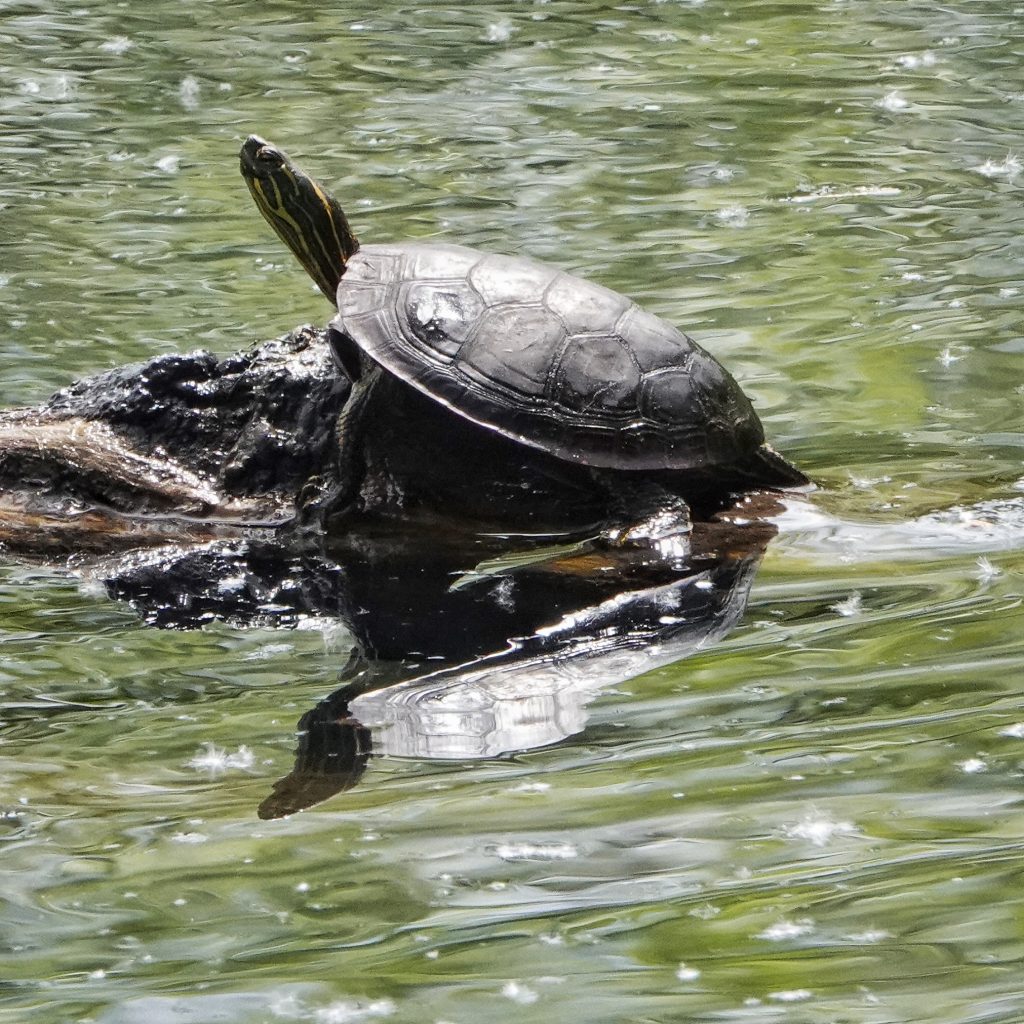
http://www.californiaherps.com/turtles/pages/c.p.bellii.html
http://www.tortoise.org/archives/chrysemy.html
https://animaldiversity.org/accounts/Chrysemys_picta/
Chrysemys picta | The Reptile Database
https://srelherp.uga.edu/turtles/chrpic.htm
https://academic.oup.com/bioscience/article/51/3/199/256149
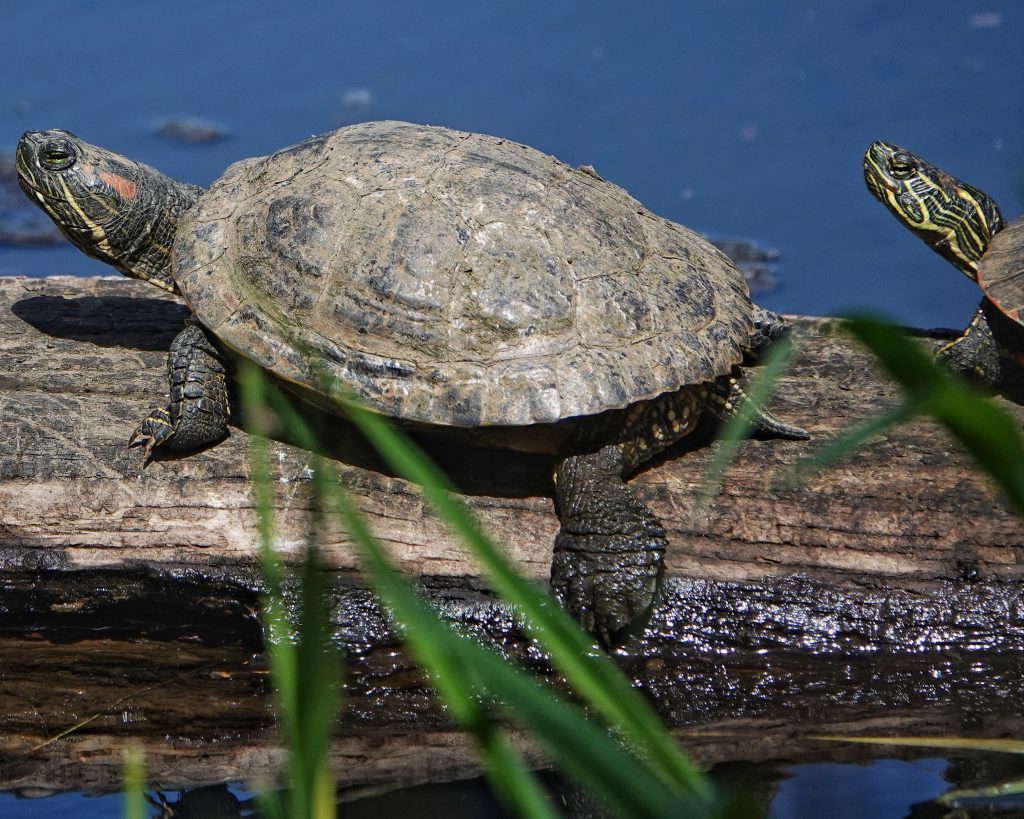
Great to see you making up for lost time with this latest in a string of engaging posts. But do take care to pace yourself….
Thanks Trevor, I intend to😀 Just had lots to talk about, and poor weather pushed me to the keyboard…
I LOVE to see turtles in the wild, but why do you say the western painted turtle is the only WA native and lives primarily on the East side? what about the western pond turtle (Actinemys marmorata) that is almost extinct in the Puget trough?
by the way, I have enjoyed your posts and am sorry to see you leave us – I don’t do Facebook
The only Washington native with yellow marks on the face. And Western Painteds are more common in the Columbia Basin on the east side, but they’re native around the Lower Columbia River also. All the info in my books and that I found online agreed with that. It’s really sad to see the Western Ponds going. I only know one place to find them in sw Washington.
I’m not going anywhere. It’s Facebook I’m bailing on, but I’ll still be posting regularly on my site. Glad you enjoy them!